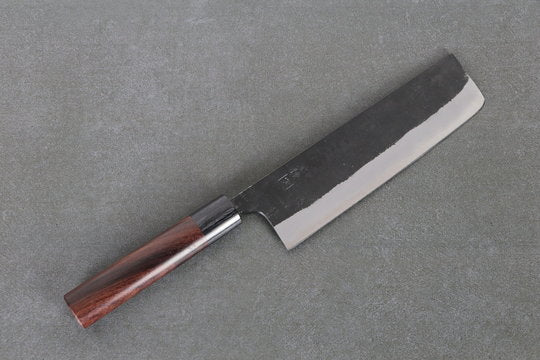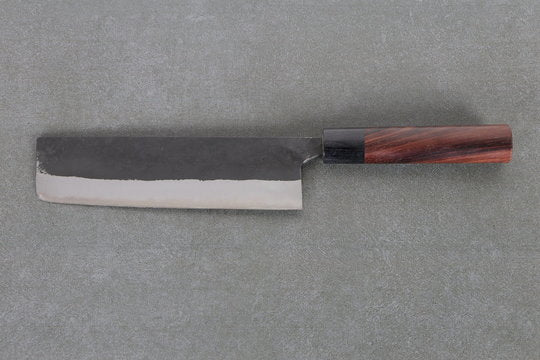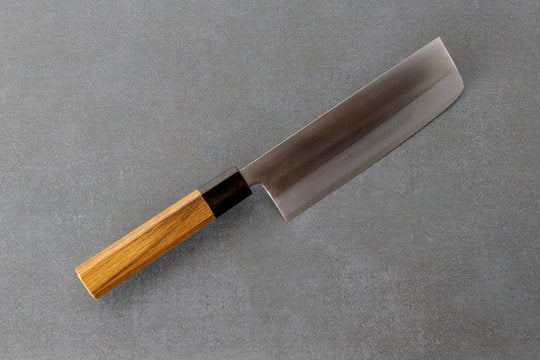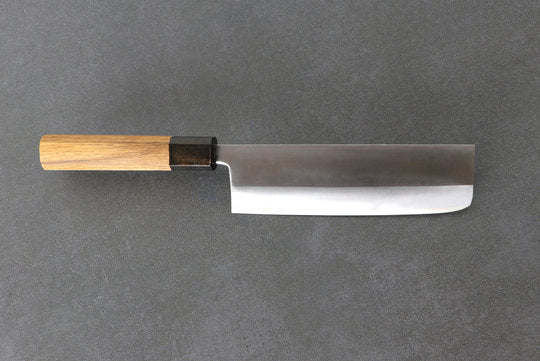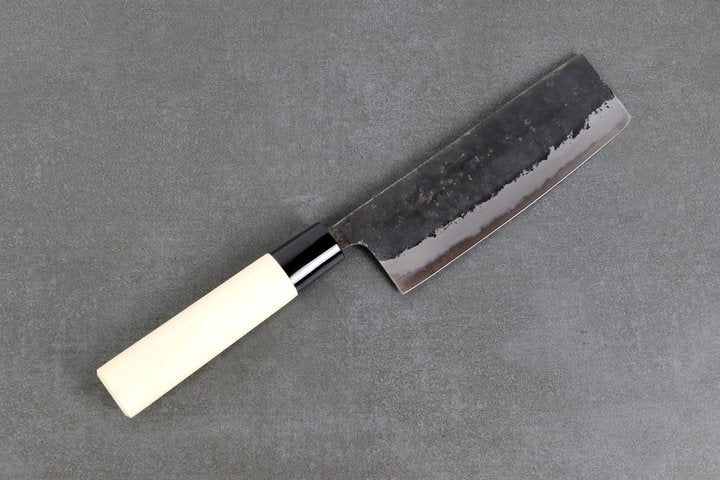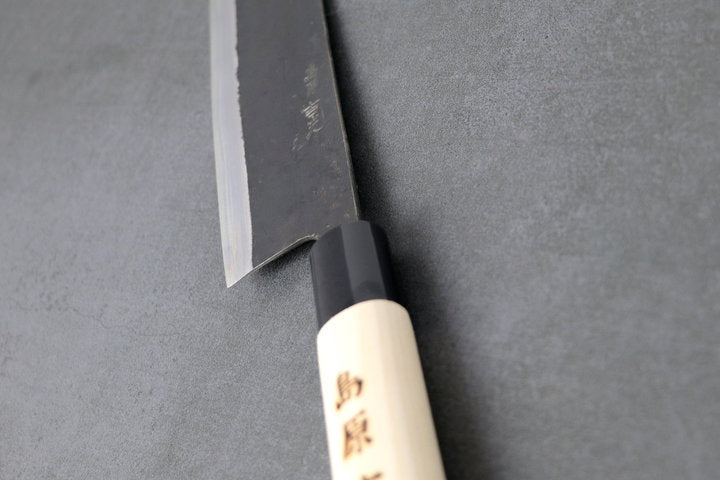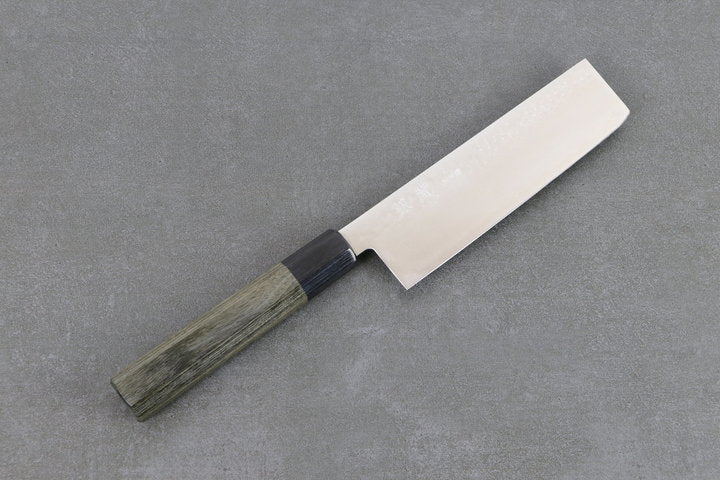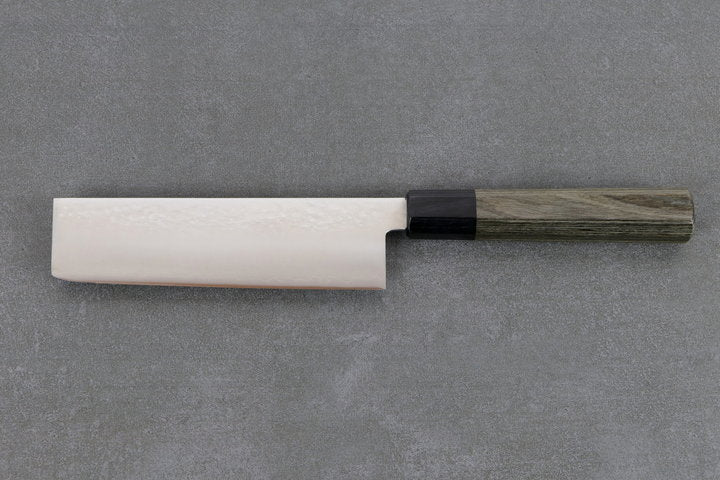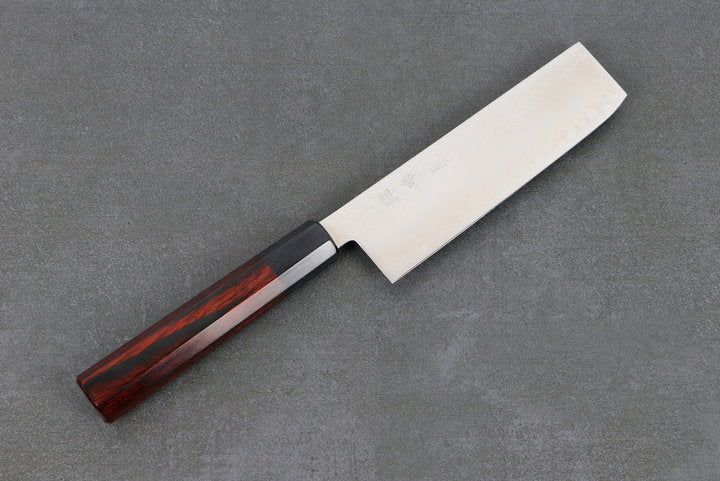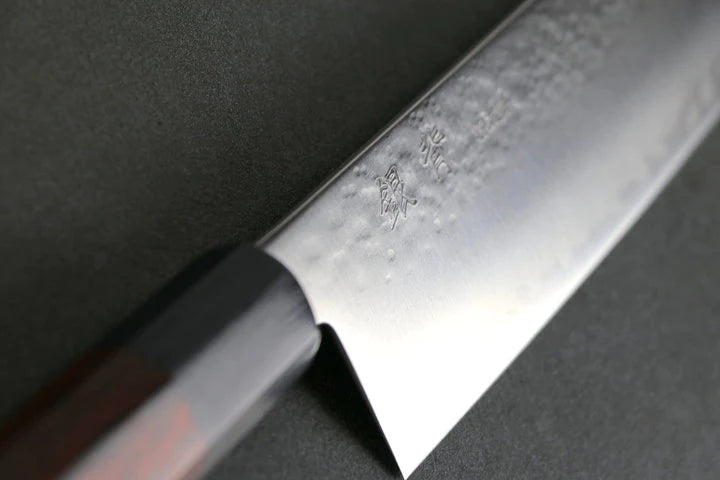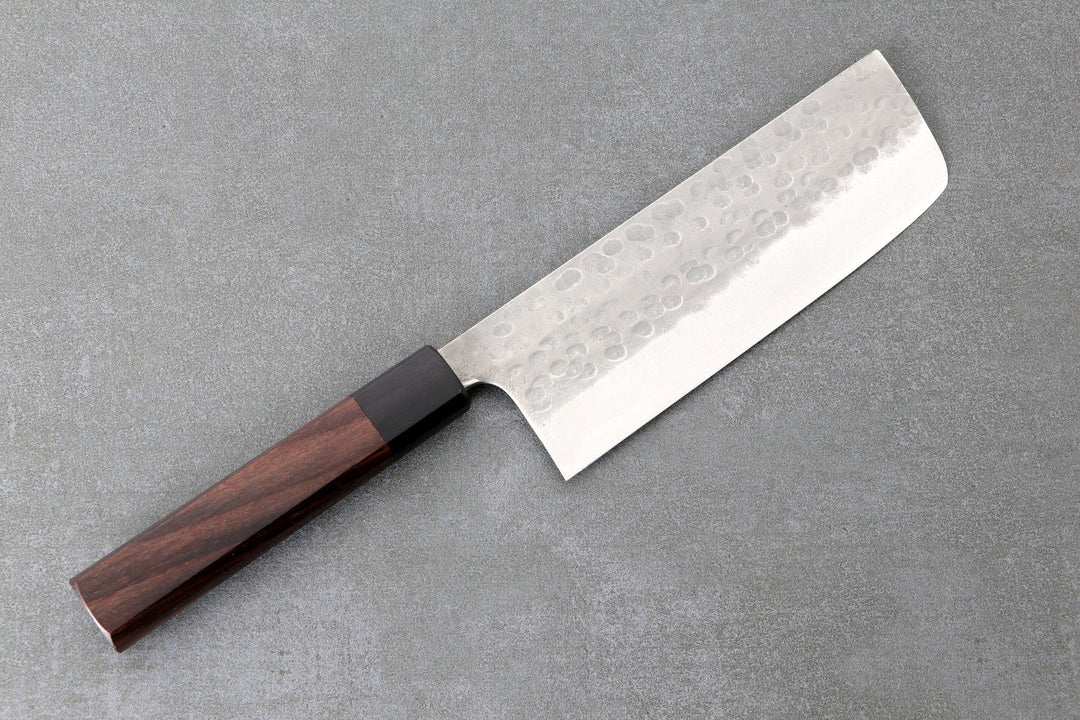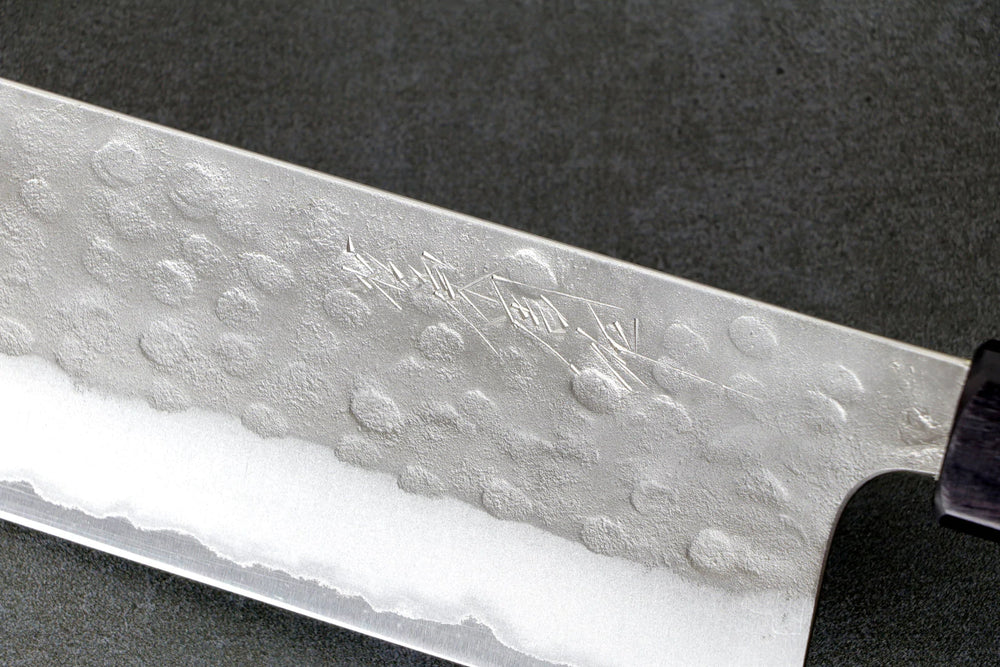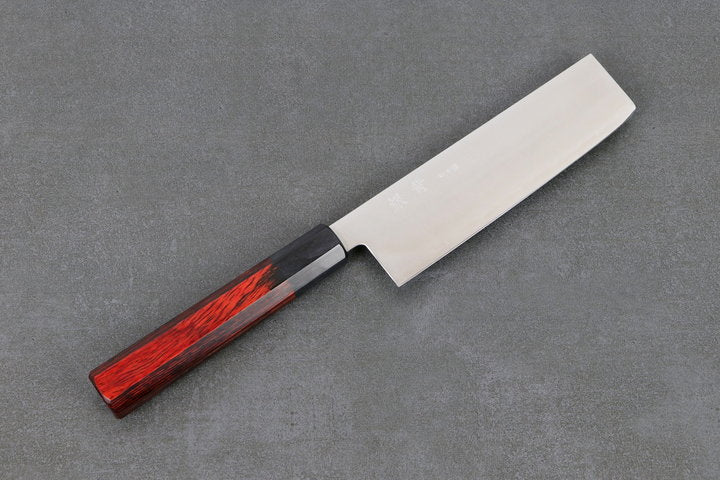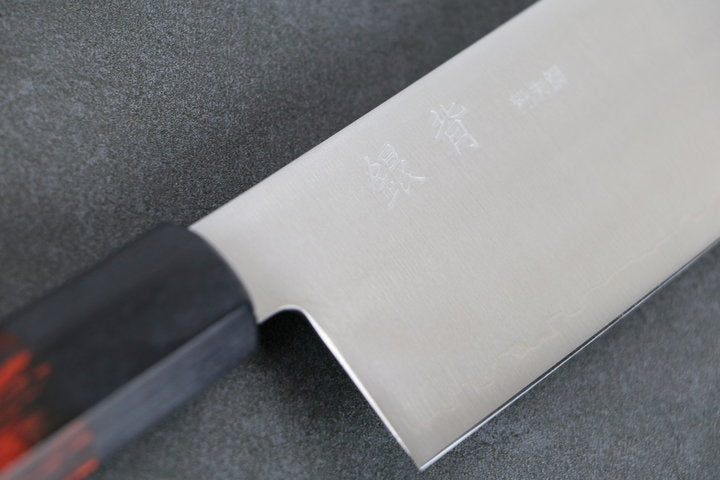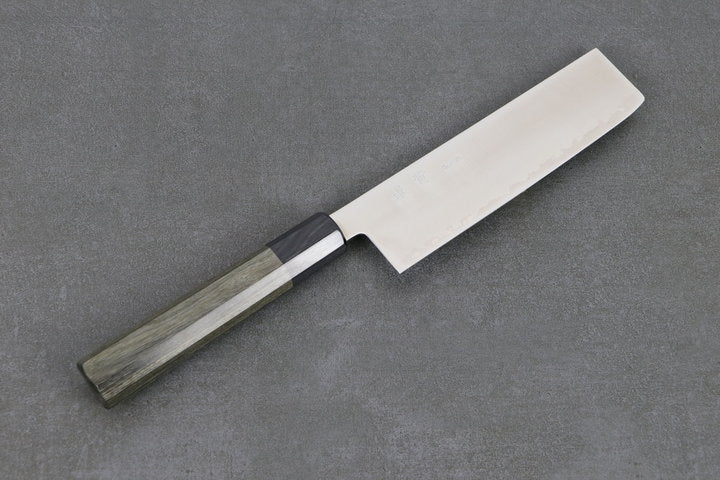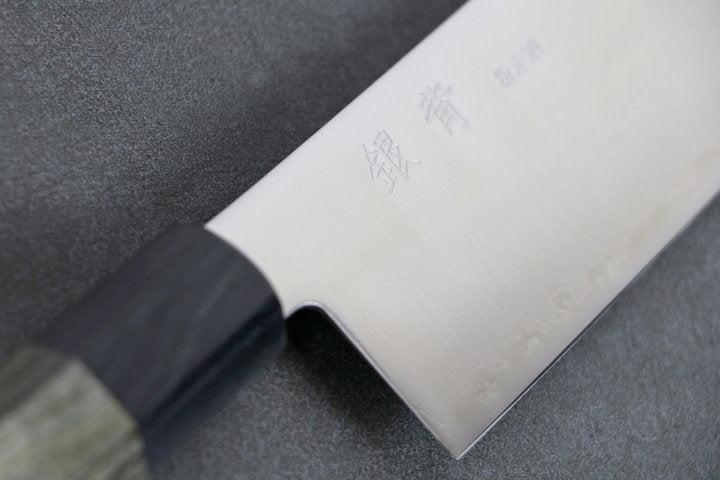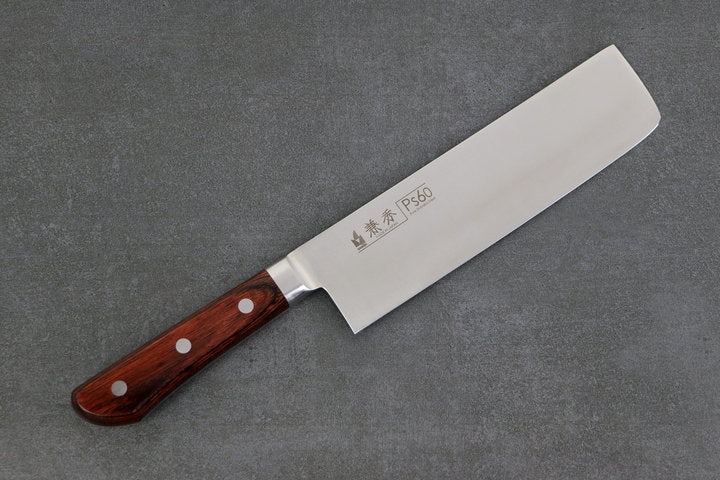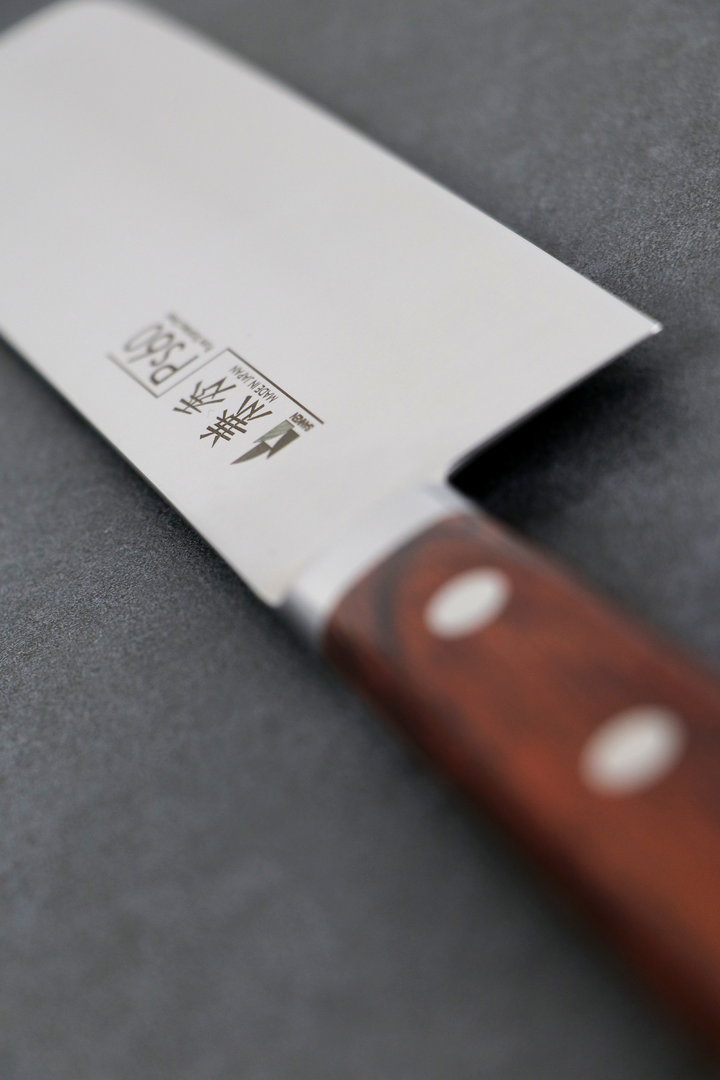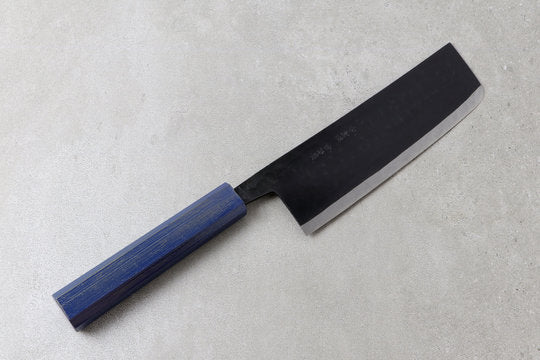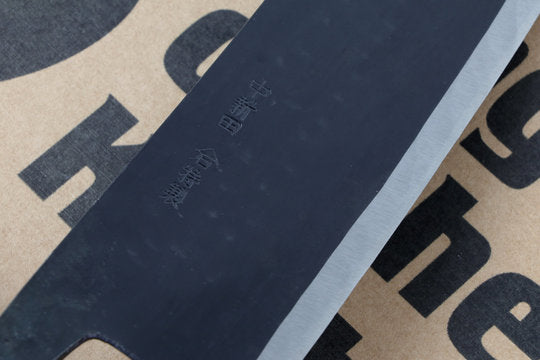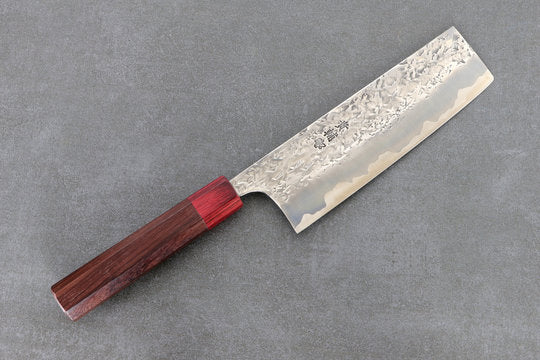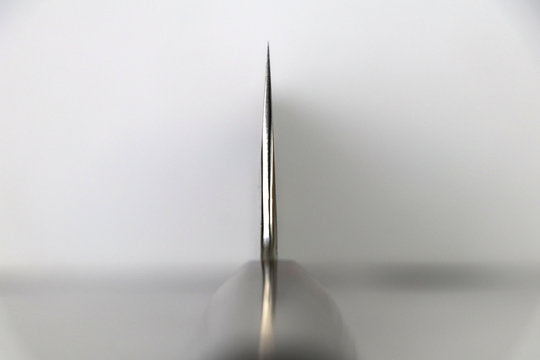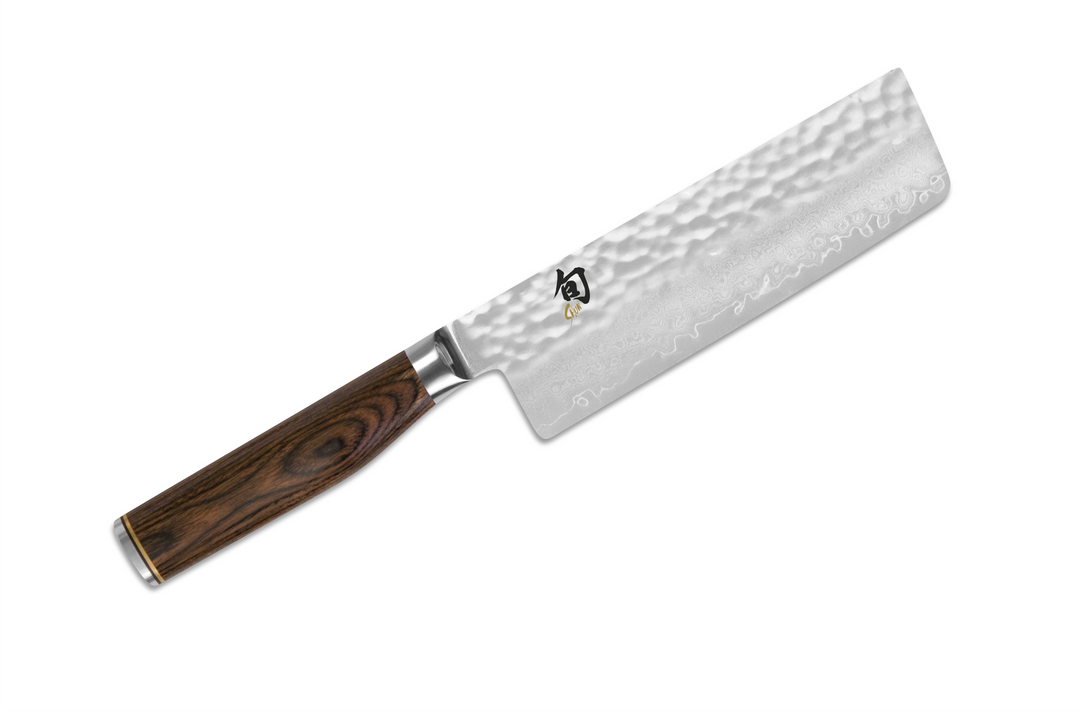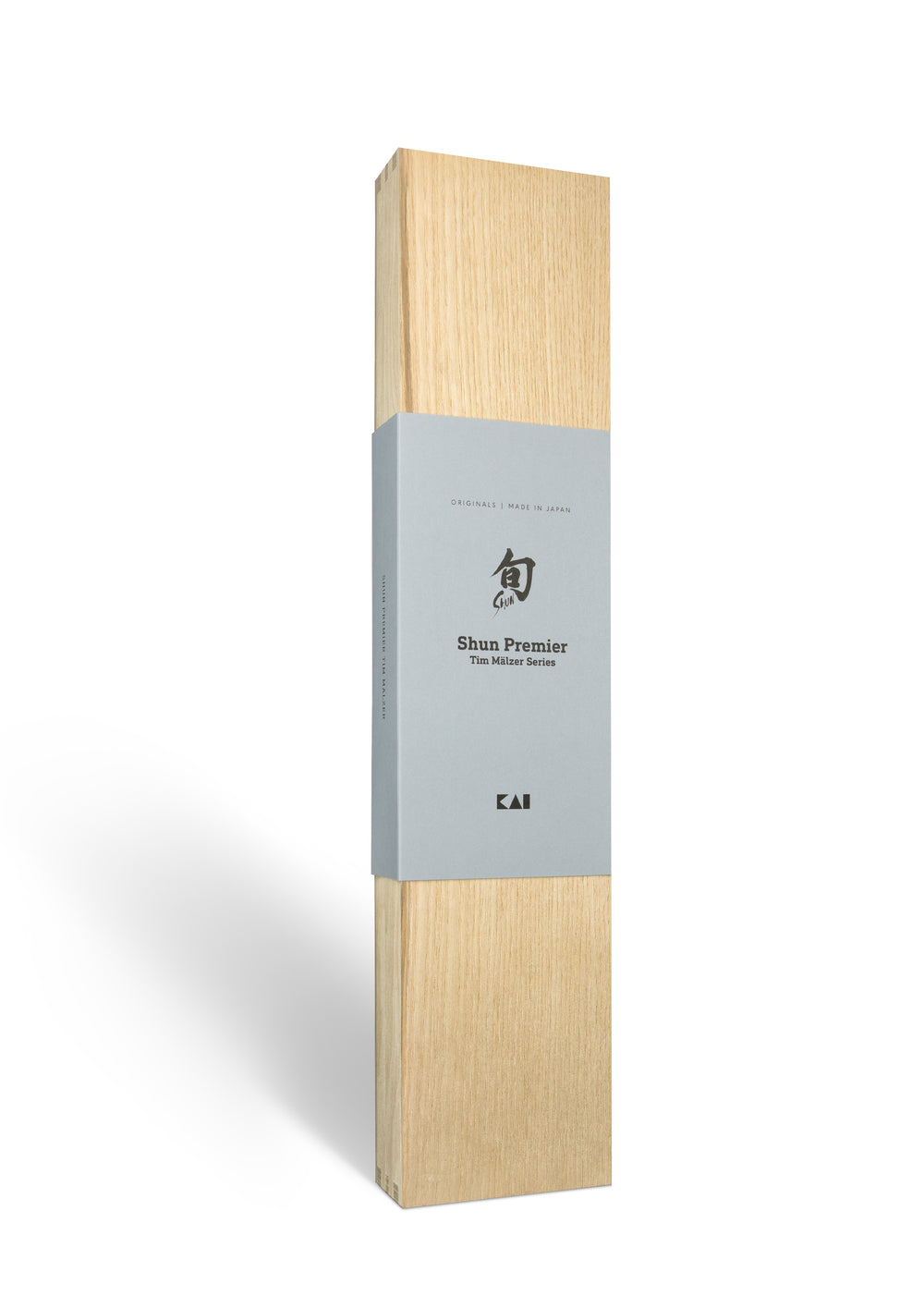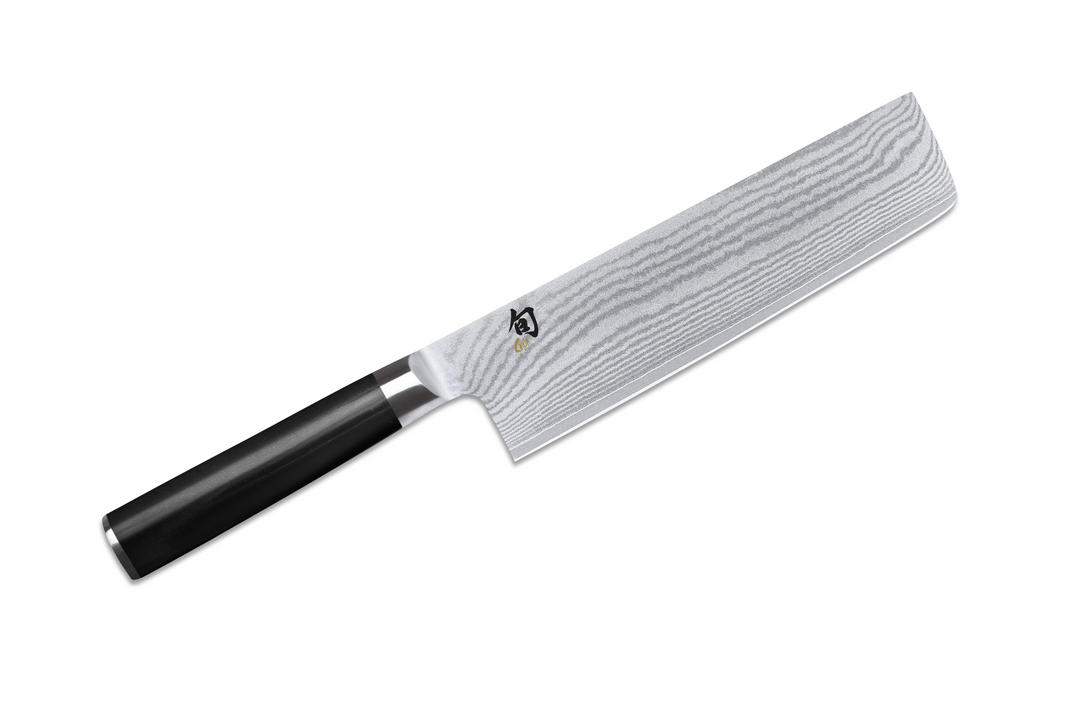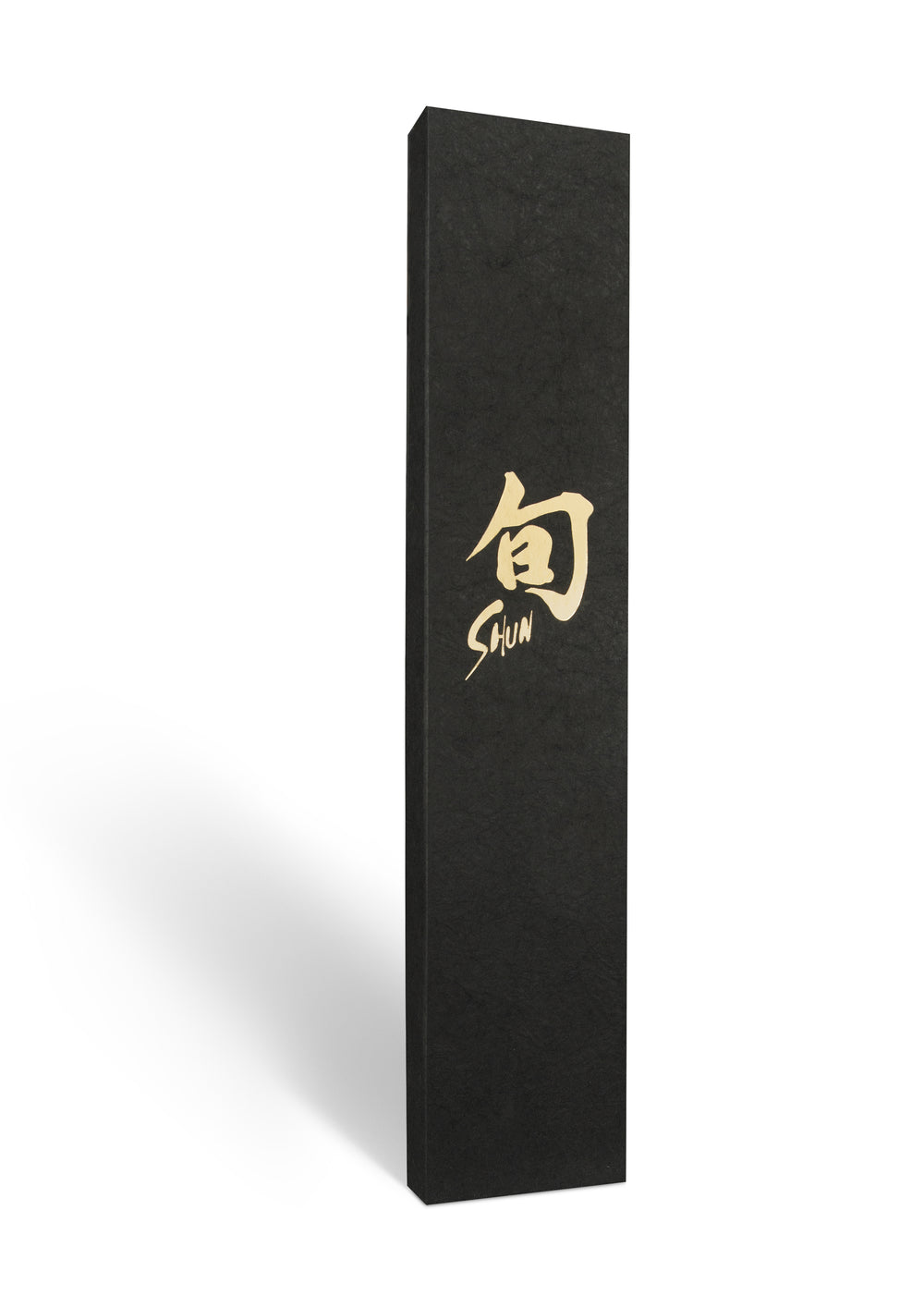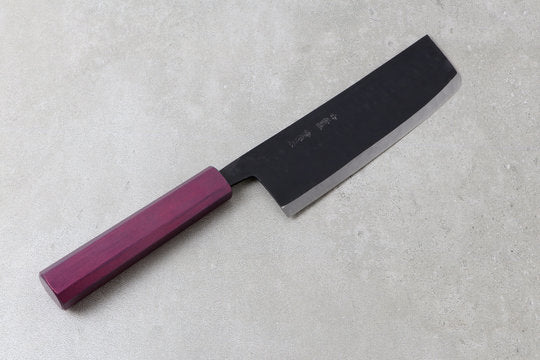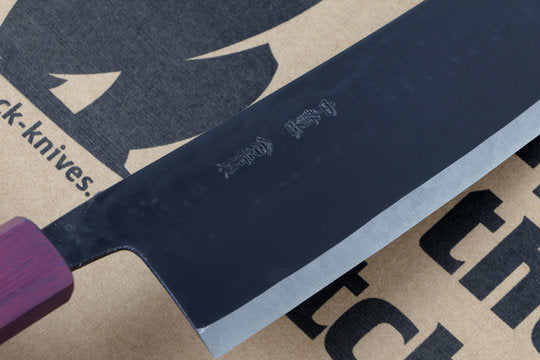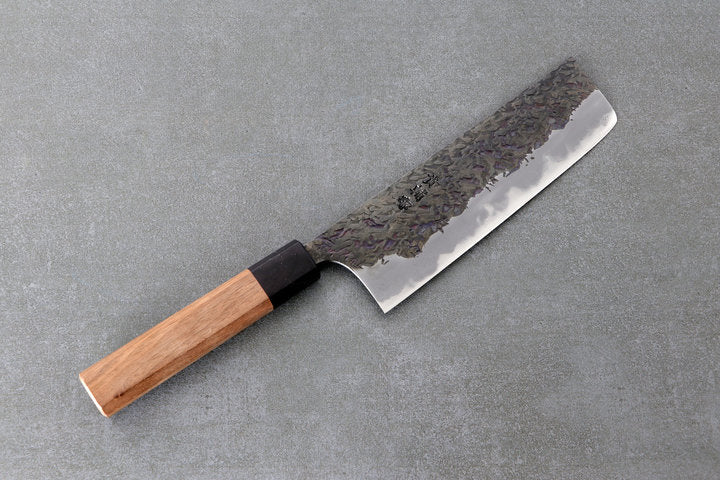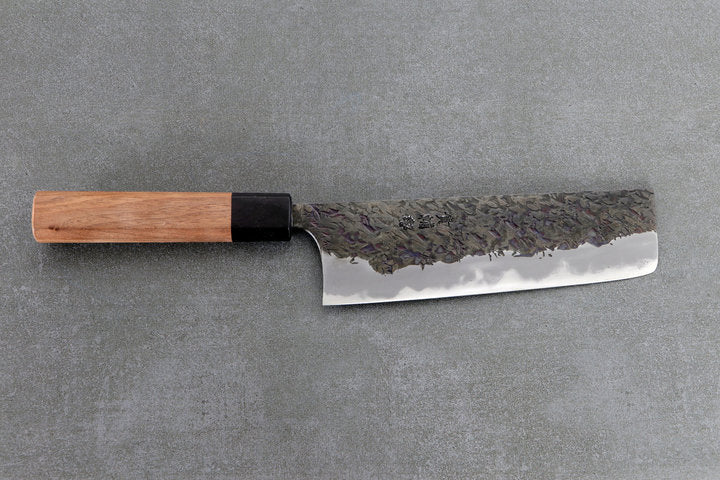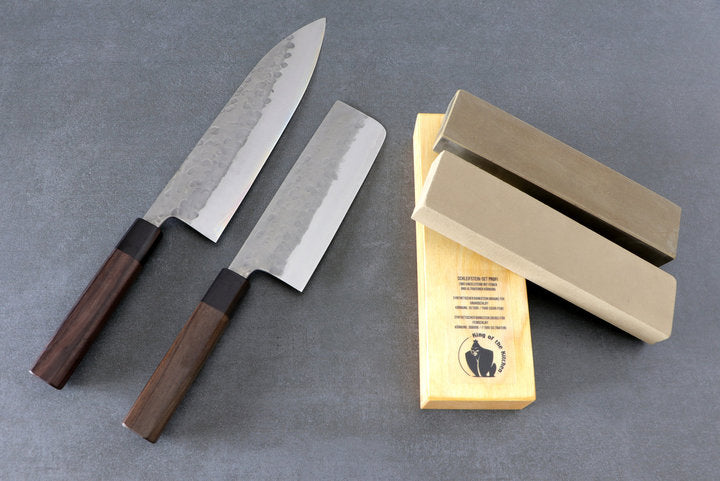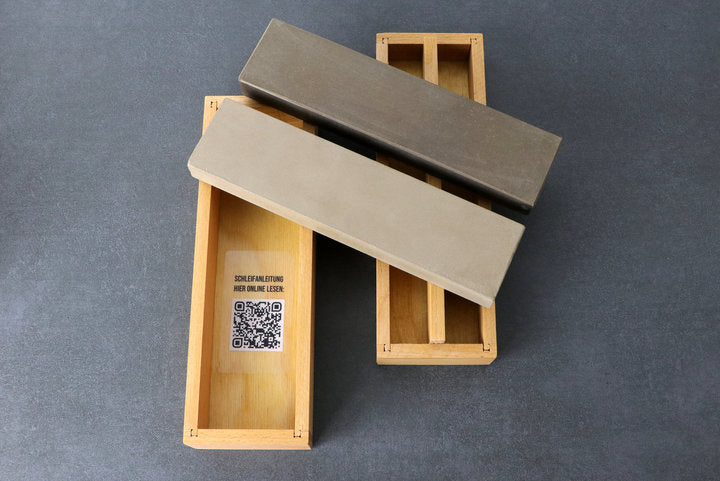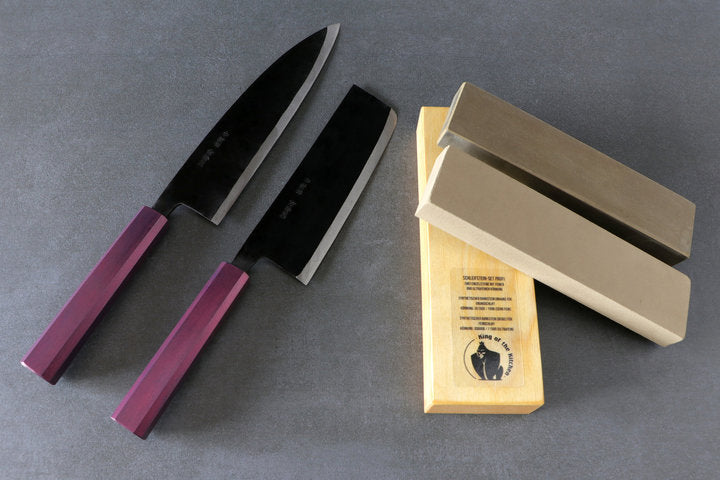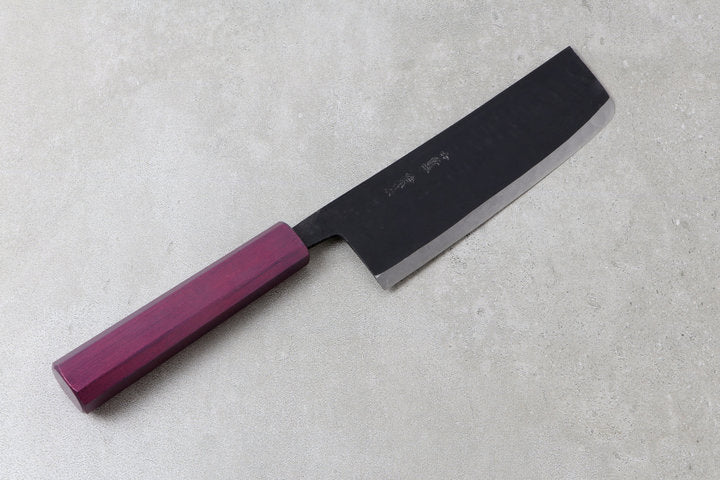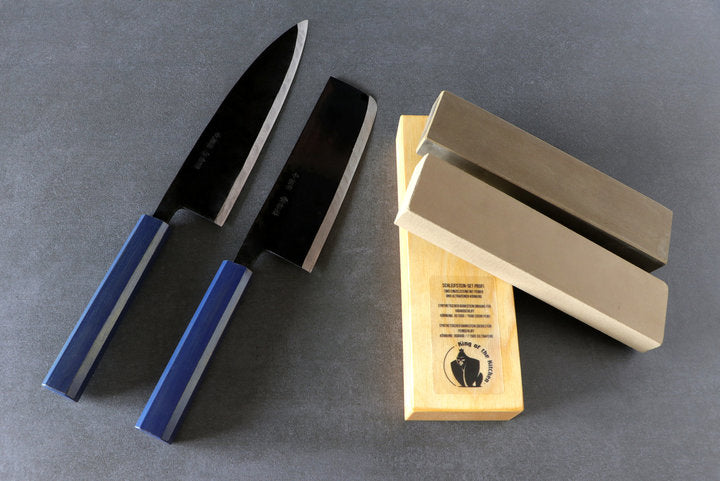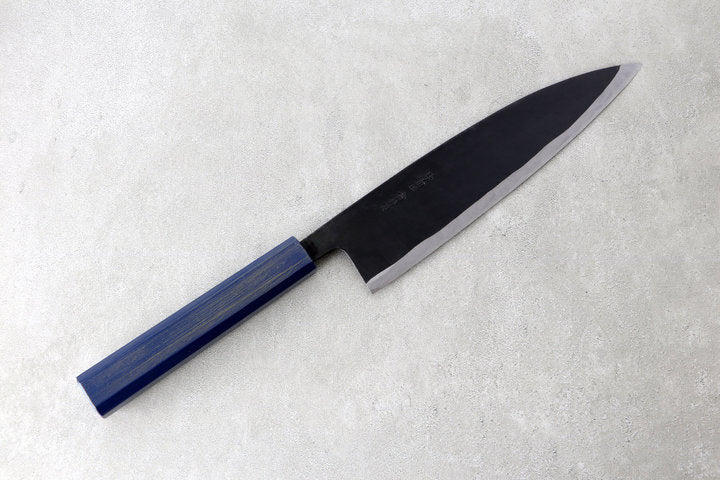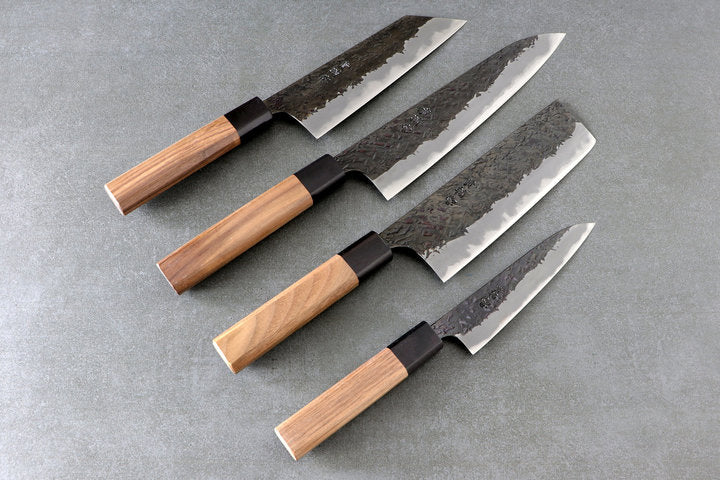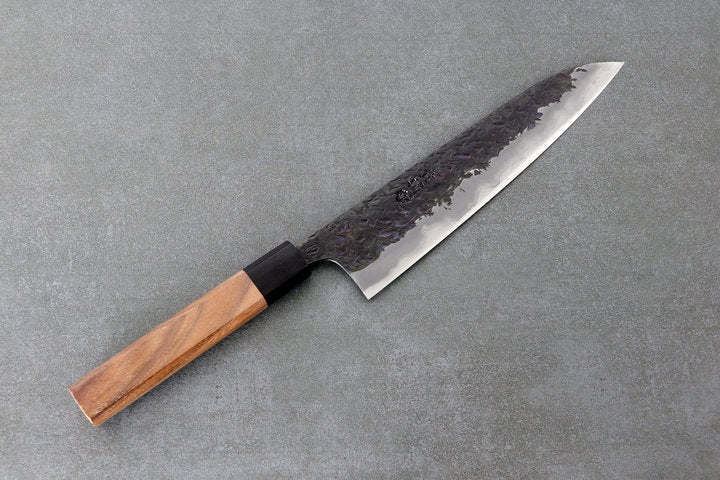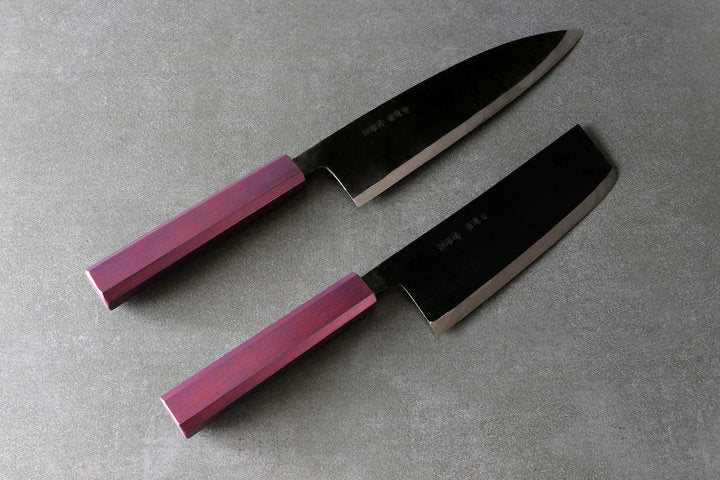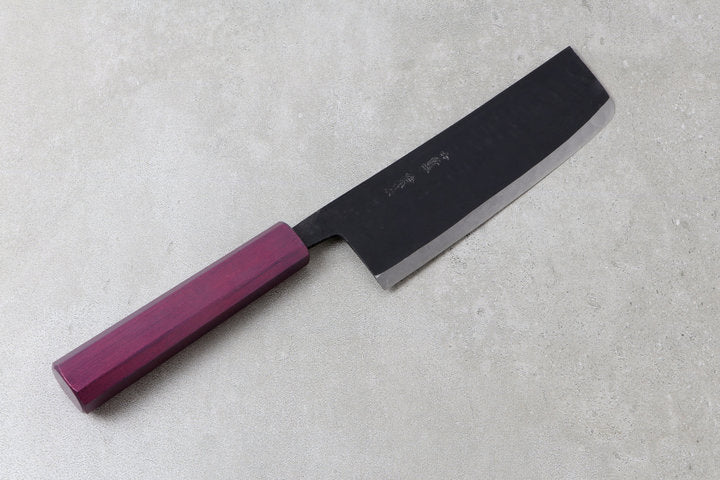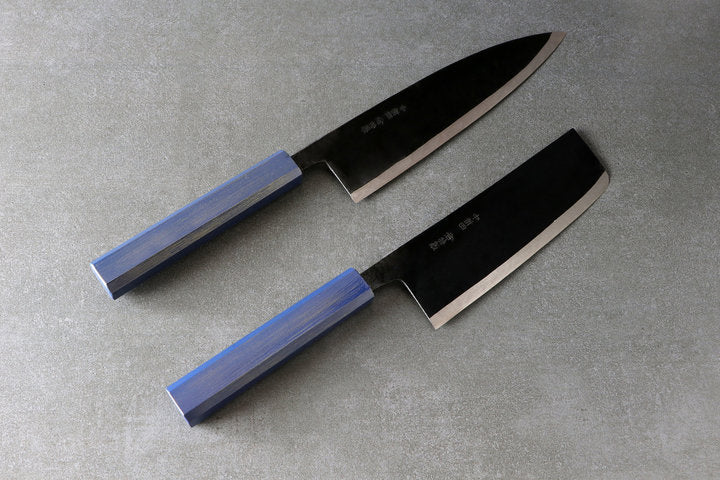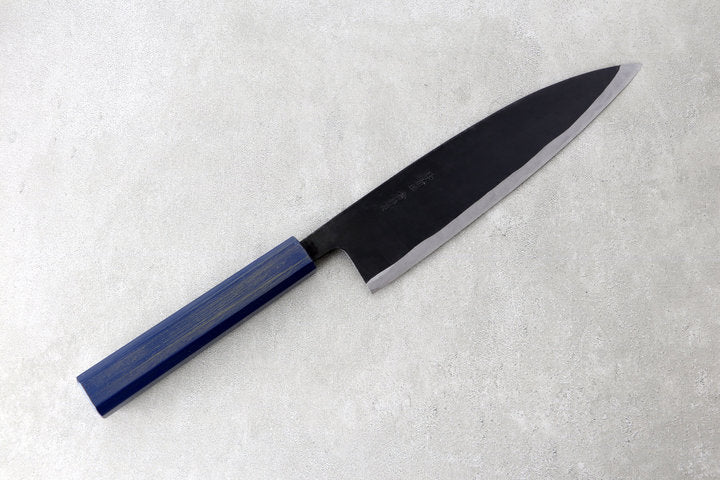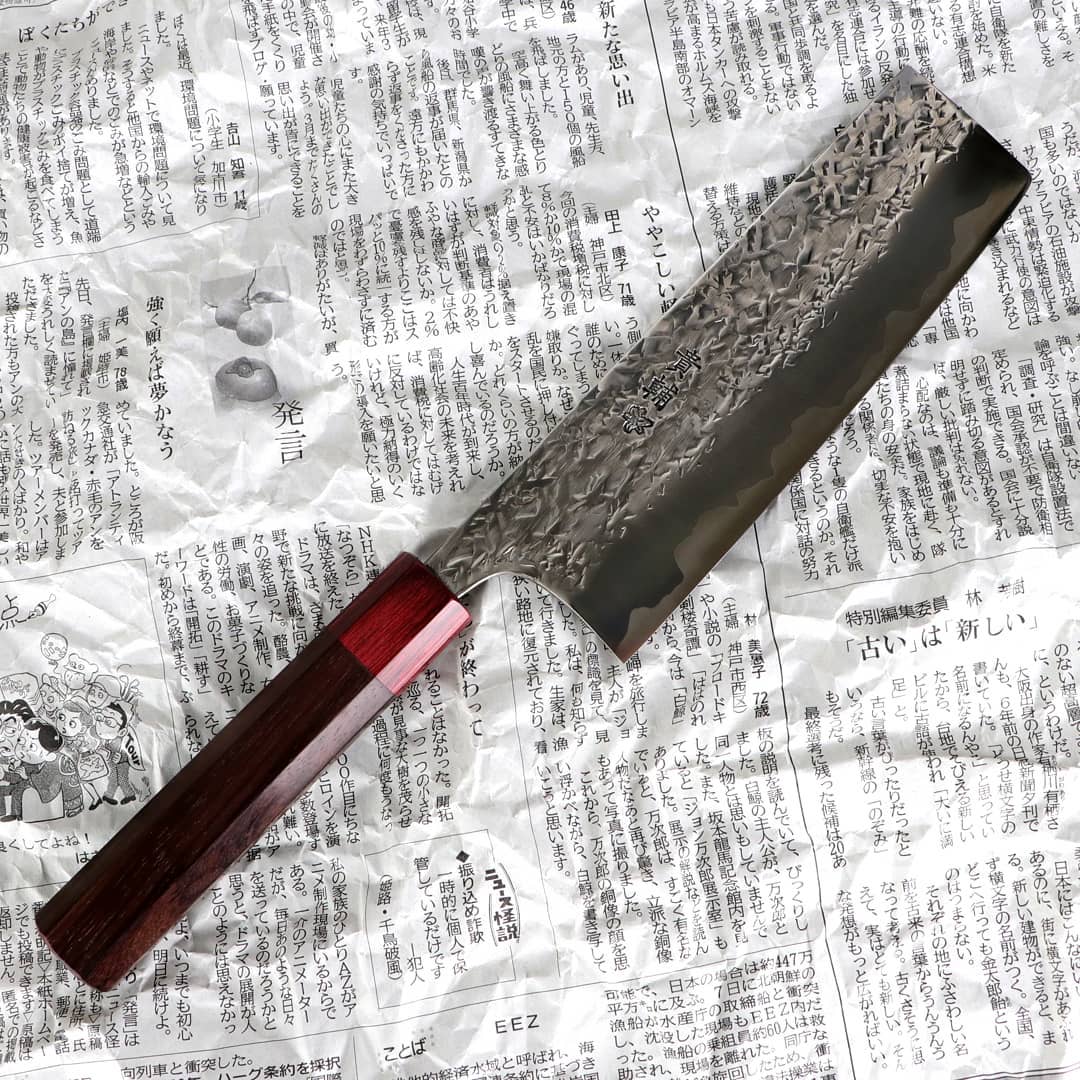
Hardly any Japanese knife is more famous because of its
blade shape. The nakiri knife usually has the following features:
- Blade length from 15 cm to 18 cm
- rectangular blade shape with
relatively high blade - Cutting edge ground on both sides
therefore suitable for right-handers and left-handers - Variants with one sided grinding
are called Usuba - Ideal for cutting fruit and vegetables
- Mostly with center of gravity towards the end of the blade, which allows cutting with less effort
- Not to be used for chopping bones or
frozen foods
The Nakiri Knife - Nakiri Hocho
The Japanese Nakiri knife is a special chef's knife for cutting vegetables and fruits. The concise blade shape with a high blade blade is ideal to be able to do coarse and fine work and is practical to transport the ingredients into the pot as if on a kind of shovel. Basically, they are primarily suitable for fruits and vegetables, but it can also be used for meat or fish.
This vegetable knife should not be confused with a Chinese cleaver and is not suitable for bones or frozen. Japanese blades are filigree and therefore much sharper to grind than mono steel blades.
Especially chopping voluminous cuttings or herbs are ideally done with this chef's knife. Also pushing and pulling cutting motion over the entire blade but also fine slicing are no problem with the knife.
Next to the Santoku and the Gyuto this knife is the most used cooking knife in Japan. It is a vegetable knife and a real classic in Japanese kitchens. The mostly around 16 cm long blades in rectangular shape usually have a very thin blade. This allows very fine, straight cuts and the ingredients are not crushed when cutting. The fine blade is ground on both sides, the single-edged version of the Nakiri knife is called Usuba. Traditional models are made of 3 layers of steel, a blade length of 18 cm and are sharpened on both sides.
What is a Nakiri knife and what is it used for?
Since in Japan traditionally a lot of vegetarian cooking is done, the Nakiri Bocho has its origin as a vegetable knife. Today, this knife shape is still considered a traditional vegetable knife.
The Japanese vegetable knife is also ideal for chopping herbs. After cutting, the approx. 50mm wide blade is perfect for transporting the cut material directly for further processing in a pot or pan. While the Bunka knife and Santoku knife types are used as all-purpose knives for fish, meat and also salads, this chef's knife is mainly used for vegetable ingredients in Japan. This chef's knife is equally suitable for both right-handed and left-handed people.
Nakiri vs. Usuba - What is the difference?
Unlike the Nakiri, the Usuba always has a single-edged blade. While the Nakiri is usually produced only up to 18 cm blade length, there are also Usuba articles with longer blades, but about the same blade width. Regarding the price, Nakiri and Usuba are approximately in the same range.
Except for soner cases, the blade length of Usuba and Nakiri is identical, only in the grind these kitchen knives differ. In terms of finish, i.e. the blade surface and the handle, there are no differences that can be attributed to the type of knife.
The Nakiri and Usuba vegetable knife are the type of knife that is best suited for processing vegetables. This is as true for cutting large cabbages as it is for chopping herbs, coarse and fine dicing of squash or cabbage, peeling work or fine cuts for carrot sticks, for example. This Japanese vegetable knife is always the knife of choice! Although the Nakiri knife is mainly seen as a vegetable knife, it is often used more universally as well. Basically, all softer foods can be processed with this kitchen knife, in addition to vegetables, the blade of the knife can easily be used to achieve perfect results when cutting other items such as cheese, meat, fish, etc.
The Japanese Nakiri is widely used in Japan as a single and double-edged variant and is also called the Japanese vegetable knife. The usually high and slender blade is preferred in the kitchen for quick processing of vegetarian foods such as fruit as well as for fine chopping of onions or herbs (do not chop bones!).
Especially for vegetarians it is an absolute recommendation, as it can show its strengths optimally in the preparation of vegetarian dishes. Although this Japanese knife resembles the classic Chinese cleaver, it is used in a fundamentally different way. The thin blade is not suitable for cutting bones or hard products, the blade with the fine grind could be damaged! Japanese chef's knives are also made of very hard steel, but this is provided with a fine grind for optimum sharpness, which in turn makes the edge sensitive.
NAKIRI care and sharpening
Care depends mainly on the knife steel used. For example, the high-carbon steels Aogami and Shirogami are more susceptible to corrosion than lower-carbon steels such as ATS-34, so for high-carbon blade steels, be sure to clean and dry the blades after use.
Japanese chef's knives should be stored in a dry place and never cleaned in a dishwasher (this advice also applies to conventional Western knives!). (Soft) wooden and plastic pads are best suited as working surfaces. When using glass, stone and marble as cutting surfaces, the steel of the knife wears out much faster. This also protects the finish of the kitchen knife and prevents or reduces the formation of rust.
The best way to sharpen Japanese knives is with water sharpening stones. Nakiri knives should also be sharpened with water whetstones. Our robust natural water whetstone is suitable for fine sharpening. Experienced users of sharpening stones can also use our somewhat more sensitive stones on offer (sharpening stone set Profi). These whetstones allow you to bring out the full potential of Japanese knife steel. To achieve optimum sharpness, hand sharpening is recommended for a 3-ply blade.
Which type of stone should be used depends on the condition of the blade (this also applies to other blade shapes such as Santoku or Bunka). If a nakiri has a very worn cutting edge, it is recommended to first make a basic grind, followed by a fine grind. If you use a Nakiri or Usuba knife regularly and sharpen it just as regularly, it is usually sufficient to use a fine to ultra-fine grit for the fine sharpening. In any case, we do not recommend the use of sharpening rods or sharpening steels. These items are not suitable for Japanese knife steel and should therefore not be used with Nakiris either!
Which Nakiri to buy, what to look for?
HOW OCCASIONALLY IS THE NAKIRI KNIFE USED: It is mainly used for preparing larger quantities of vegetables. So depending on how often you cook dishes with vegetables, this chef's knife may make more or less sense. In the spirit of a healthy lifestyle, and perhaps to get more enjoyment and pleasure from preparing vegetables, we recommend a nakiri as part of the basic equipment (along with an all-purpose knife such as santoku, gyuto or bunka) in the kitchen.
With frequent use, of course, the material is also demanded accordingly, so an excellent quality of workmanship must always be ensured. All knives in our store (see also Santoku, Bunka, Gyuto, Kiritsuke, Petty) are made by traditional cutlers and are, with proper care, a very durable tool.
THE OPTICS OF THE NAKIRI KNIFE: Of course, the appearance also plays an important role in the purchase decision. One would certainly rather use a beautiful object than an object that already does not appeal to one visually! Decisive for the appearance are the steel used, the surface structure and the finish of the blade as well as the handle. The shape of the blade is similar in all Nakiri knives and easy to recognize. Depending on your personal taste, you can find pieces with very different looks in our store. For example, we carry the very artfully forged Kisuke Nakiri knives, some of which are also prized as collector's items by devotees of Japanese arts and crafts. Also available, however, are variants designed for performance and robustness.
There are different finishes that influence the appearance of a knife. Very well known is the damask pattern. However, Damascus can be just a pattern, but also a blade formed from several layers. Here it is necessary to look carefully. Besides Damascus knives, there is also the Nashiji finish, the Tsuchime finish or Korouchi.
ERGONOMICS IN NAKIRI KNIVES: As a vegetable knife, nakiri knives are generally used frequently. The ergonomic "fit" - the feeling of safety when handling the knife, is therefore an important point to consider when choosing the right Nakiri. Decisive for this feeling of safety when working with the Nakiri is mainly the balance or equilibrium, the handle (or the feel and shape of the handle) and the weight and length of the knife. All Nakiri knives have excellent balance, this allows the knives to be wielded very cleanly and precisely and does not tire the user. The handle itself is ultimately a matter of taste. Some customers prefer natural Japanese handles without edges. Other customers, on the other hand, prefer lacquered handles that are octagonal in design.
Blade length at the nakiri knife
Many knives have a blade length of 165mm or 170m, which makes them ideal as vegetable knives and for herbs. With this blade length, large vegetables such as cabbages can be cut, but also smaller vegetables can be cut into delicate strips or cubes. The weight of a nakiri depends largely on the blade steel used.
For example, the Yoshimitsu Blue #2 Nakiri, weighing 149 grams, is significantly lighter than the Kisuke ATS-34 Nakiri, weighing 188 grams.
Nakiri vs. Santoku - What's the difference?
Chefs all over the world relied on santoku knives and nakiri knives. While these two kitchen knives are similar, they are far from identical. The Santoku has a knife point and the edge runs in a radius. This allows the Santoku chef's knife to unroll when cutting, this technique is called a cradle cut. The Nakiri knife is used more for pushing and pulling movements. Due to the lack of radis, the blade rests in a larger area of the blade length. Thus, the Santoku requires a different cutting technique. Also the loosening of meat or fish goes better with the tip of the Santoku. The grind of Santoku and Nakiri normally does not differ. Both chef's knives are ground on both sides. Knives are ground on both sides for better control, as knives ground on one side require more practice
Fluted edge like the santoku knife is a more uncommon finish on the blade. In terms of sharpness, steel of the blade, grind and also blade length there are no general differences. Just the blade length of both knives is typically 16 cm to 18 cm. All these comparisons of the blade or even knife as a whole shows that the Japan knives are very similar and have a common origin. However, there is nothing wrong with having a Santoku and a special paring knife in the kitchen.
How to properly handle a Nakiri, you can see in this video from us.


